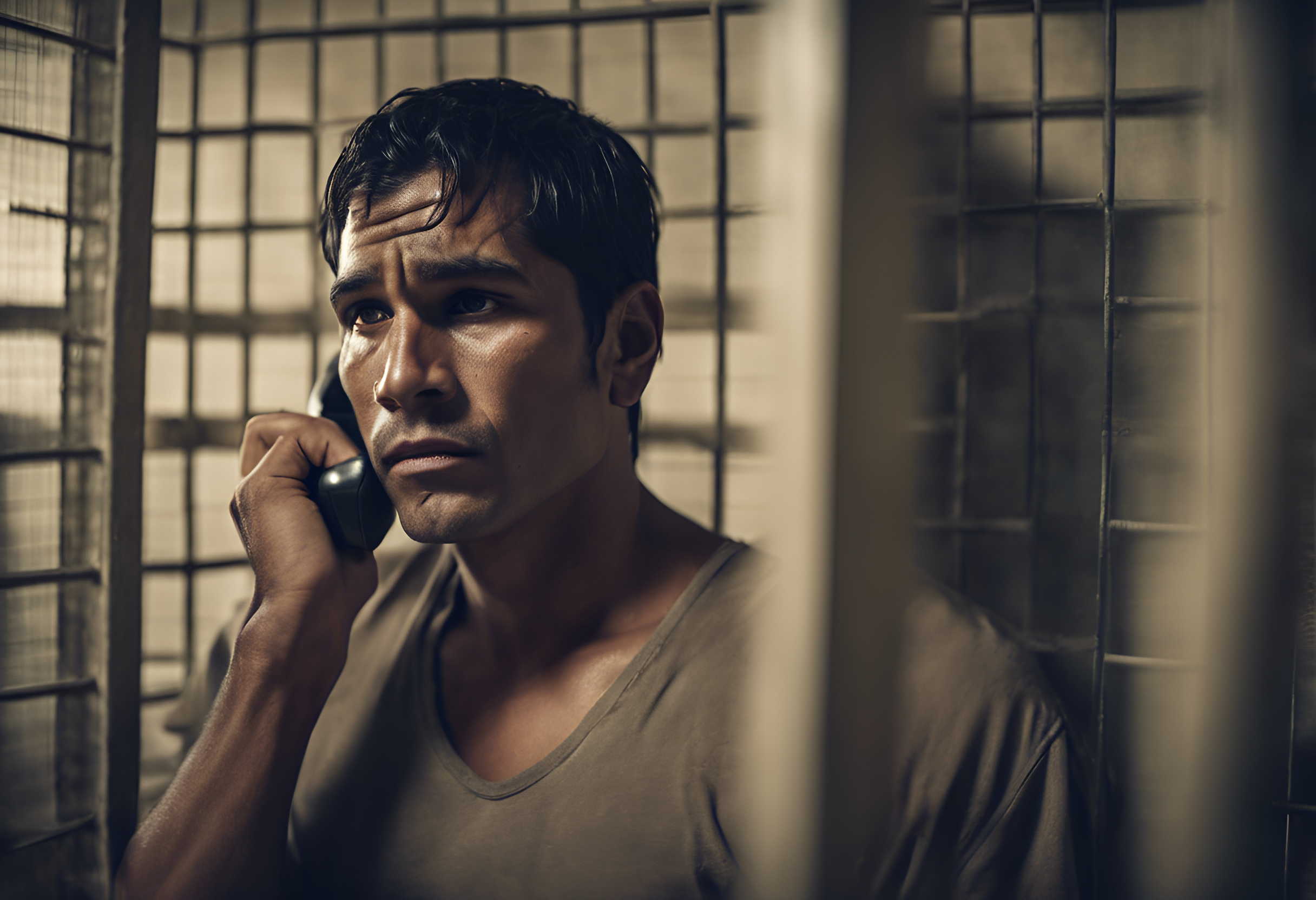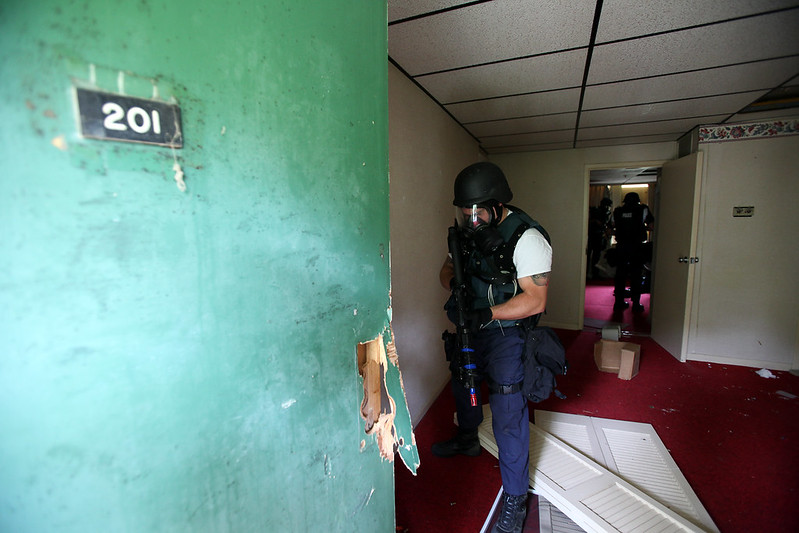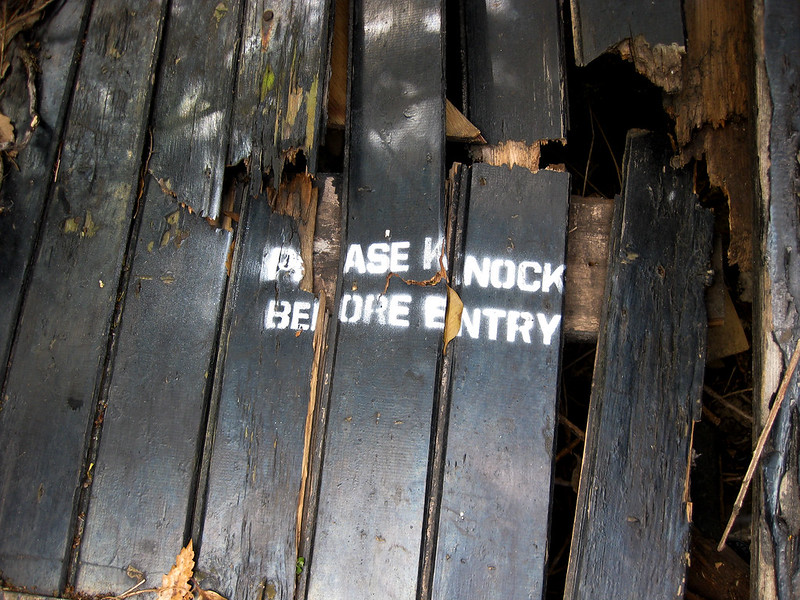This week’s top three summaries: R v GF, 2019 ONCA 493, R v King, 2019 ABQB 467, and R v DC, 2019 ONCA 442.
R v GF (ONCA)
[June 14/19] Sexual Assault - Consent and Capacity to Consent - 2019 ONCA 493 [Reasons by G. Pardu J.A., with David Watt J.A., and I.V.B. Nordheimer J.A. Concurring]
AUTHOR’S NOTE: Alcohol use is often involved when sexual assault cases go to trial. Alcohol consumption by a sexual assault complainant can impact on the issue of capacity. However, concepts of Consent and Capacity to Consent must be considered separately by a trial judge. Otherwise, confusion between the two can lead to new trial - if there is no consent, one need not consider capacity at all. In this case the trial judge appeared to fuse the two issues together. Factually, the trial judge appeared to find that the complainant did not consent because she had no capacity to do so due to her state of intoxication. However, if she did not consent in fact, there was no need to consider her capacity to do so at all.
Pertinent Facts
"That night, while sitting around the fire, C.R. testified that G.F. gave her shots of a liqueur; she also consumed some beer. C.R. began to feel nauseous and dizzy, and decided to lie down in the trailer. She had been in the sun all day. C.R. said her brother was in the trailer playing games with her on her iPhone for some time, but then he left. C.R. said G.F. entered the trailer and gave her more alcohol — shots of peach vodka. C.R. estimates that G.F. gave her between 8 and 10 shots in total. She then vomited with some of her vomit spilling onto the mattress cover, leaving a basketball-sized stain. At some point, the appellant R.B. entered the trailer to clean up and offered the complainant a plastic bag if she continued to vomit. Eventually, C.R. passed out or fell asleep." (Para 5)
"C.R. testified that she woke up when she felt her pants being pulled down. She heard G.F. tell R.B. to perform oral sex on C.R. R.B. did so. G.F. then moved the complainant's hips toward him and began vaginal intercourse. He pushed the complainant's face into R.B.'s vagina and instructed her to perform oral sex on R.B. C.R. testified she was scared, in shock, and did not know what was going on at that point. C.R. testified that she was so intoxicated that she had no control of herself, and said she "kept blacking out and going in and out of it." Asked whether, at the time, she felt that she could make a choice about whether or not to have sex, she answered: "No"." (Para 6)
"C.R. testified that she said the word "stop" a few times, and was crying and groaning, to which G.F. responded, "be quiet, your parents are gonna hear you." She did not call out for help, testifying that she was confused and "scared to do anything" such as scream or yell while the sexual assault was occurring. She last remembers G.F. and R.B. having sex together before she passed out." (Para 7)
GF's description was different: "G.F. said he returned to the trailer at 3:15 a.m., surprised to find C.R. in bed under a blanket with R.B. He said he was interested in engaging in sexual activity with R.B., and hinted at C.R. to leave. He testified that C.R. said she liked them and wanted to remain in the trailer. He asked the two if they had kissed, and to his surprise, R.B. and C.R. began to kiss. G.F. was uncertain as to whether he was welcome to participate in the sexual activity, so he rubbed C.R.'s thigh over the blanket and she responded by removing the blanket to let him touch her bare thigh. The three of them then participated in what he described as consensual oral and vaginal sex. Throughout the sexual encounter, G.F. said he asked C.R. repeatedly if she was okay with engaging in sex with them, and she assured him she was. He said C.R. was coherent and alert throughout." (Para 12)
The Trial Decision
"All parties agree that G.F. and R.B. engaged in sexual relations with C.R. The trial judge concluded that C.R. did not validly consent to the sexual activity. The trial judge was of the view that the main issue in the trial was one of credibility. Both C.R. and G.F. testified at trial." (Para 13)
"The trial judge concluded that the appellants forced C.R. into having non-consensual sex: at para. 71. He then noted that s. 273.1(2)(b) of the Criminal Code, R.S.C., 1985, c. C-46, indicates that no consent is obtained where the complainant is incapable of consenting to the activity, such as when a complainant is intoxicated: at para. 72. He found both appellants guilty." (Para 22)
Consent and Capacity
"in R. v. Ewanchuk, at paras. 26-27, the court held that the absence of consent is a subjective matter and determined by reference to the complainant’s subjective internal state of mind towards the touching at the time it occurred." (Para 32)
"In R. v. J.A., 2011 SCC 28 (CanLII), [2011] 2 S.C.R. 440, at para. 31, McLachlin C.J. concluded that the relevant statutory provisions of the Criminal Code suggest that Parliament saw consent as “the conscious agreement of the complainant to engage in every sexual act in a particular encounter”. Consent means voluntary agreement as to the touching, its sexual nature and the identity of the partner: R. v. Hutchinson, 2014 SCC 19 (CanLII), [2014] 1 S.C.R. 346, at para. 5. The court indicated that in this context, given the Criminal Code provisions pertaining to incapacity that “Parliament intended consent to mean the conscious consent of an operating mind”: J.A., at para. 36." (Para 33)
"An unconscious or sleeping person is incapable of consenting to sexual activity. On the other hand, capacity for considered evaluation of the collateral risks and consequences of sexual activity sets the bar too high for capacity to consent to sexual relations." (Para 36)
"In R. v. Al-Rawi, 2018 NSCA 10 (CanLII), 359 C.C.C. (3d) 237, Beveridge J.A. discussed elements of capacity to consent to sexual relations established by the jurisprudence, at paras. 60-61, 66-67, and I adopt that summary, subject to the caveat that, in light of the varieties of human conditions which may raise issues of incapacity, it may not describe all of the circumstances in which a complainant could be found to lack an operating mind:
[61] On the other hand, requiring the cognitive ability necessary to weigh the risks and consequences of agreeing to engage in the sexual activity goes too far.
[66] Therefore, a complainant lacks the requisite capacity to consent if the Crown establishes beyond a reasonable doubt that, for whatever reason, the complainant did not have an operating mind capable of:
1. appreciating the nature and quality of the sexual activity; or
2. knowing the identity of the person or persons wishing to engage in the sexual activity; or
3. understanding she could agree or decline to engage in, or to continue, the sexual activity. (Para 36)
"As the case law demonstrates, the trier of fact must consider all the evidence to make the factual determination of the complainant's capacity at the relevant time. Issues of incapacity can arise in a multitude of circumstances, including sleep, intoxication, illness, and intellectual disability." (Para 38)
"I observe that s. 273.1 of the Criminal Code was amended effective December 13, 2018" (Para 39)
"The section now specifies that no consent is obtained where the complainant is unconscious or where the complainant is incapable of consenting to the activity for any reason other than unconsciousness. This indicates that incapacity may arise from conditions short of unconsciousness." (Para 40)
"How then should a trial judge approach the evidence when dealing with potential issues of both consent and capacity to consent? He or she should first consider whether the Crown has proven beyond a reasonable doubt that the complainant did not consent to sexual contact. If the complainant did not consent, then there is no ostensible consent which is vitiated by lack of capacity. This two-step process was described in R. v. Hutchinson, at para. 4:
The Criminal Code sets out a two-step process for analyzing consent to sexual activity. The first step is to determine whether the evidence establishes that there was no “voluntary agreement of the complainant to engage in the sexual activity in question” under s. 273.1(1). If the complainant consented, or her conduct raises a reasonable doubt about the lack of consent, the second step is to consider whether there are any circumstances that may vitiate her apparent consent. Section 265(3)defines a series of conditions under which the law deems an absence of consent, notwithstanding the complainant’s ostensible consent or participation: Ewanchuk, at para. 36. Section 273.1(2) also lists conditions under which no consent is obtained. For example, no consent is obtained in circumstances of coercion (s. 265(3)(a) and (b)), fraud (s. 265(3)(c)), or abuse of trust or authority (ss. 265(3)(d) and 273.1(2)(c))." (Para 41)
"Where the Crown proves beyond a reasonable doubt that the complainant did not affirmatively and subjectively consent to sexual contact, this absence of a subjective mental state may establish the requisite actus reus and there need not always be a further inquiry as to capacity." (Para 42)
"The difficulty with the trial judge's reasons for conviction are that he failed to assess whether the degree of impairment by alcohol was such that the complainant was incapable of consenting to sexual activity. The trial judge was led to this position in part by the submissions of the Crown suggesting that he did not have to explore the degree of intoxication versus sobriety" (Para 51)
"The manner in which the reasons are structured leaves me uncertain as to whether the trial judge considered the issue of consent separately from the issue of capacity. It is clear that the trial judge did not engage the two-step analytical process I have articulated in these reasons, by first evaluating whether the complainant did not consent and then turning, if necessary, to whether or not the complainant had the capacity to consent. He also did not apply the jurisprudence discussing the level of intoxication which could result in a finding of incapacity, if it were necessary to go to that step. His statement that no consent is obtained where a complainant is intoxicated suggests that in his view, any level of intoxication was sufficient to vitiate consent. It is not clear that this belief did not constitute the basis for his statement that there was no consent." (Para 54)
"Although the trial judge states, at para. 52, that he "concluded that C.R. did not consent to the sexual activity" and, at para. 71, that "the balance of the evidence at trial convincingly supports the conclusion that G.F. and R.B. forced C.R. into having non-consensual sex", the convictions cannot be upheld on such a basis. First, as discussed above, the trial Crown did not invite the trial judge to convict on this basis. Second, the vague statement from the trial judge that the "balance of the evidence" at trial supports such a finding is not a sufficient basis to ground a conviction; it is not clear the trial judge was making a finding that the convictions could be sustained on the basis that the complainant did not consent, regardless of her capacity." (Para 55)
R v King (ABQB)
[June 21/19] Charter s.11(b) - Judicial Decision Delay - 2019 ABQB 467 [Gillian D. Marriott J.]
AUTHOR’S NOTE: One of the controversies currently raging within judicial decision-making on s.11(b) applications is what to do with a judge's delay in making decisions. Here the trial judge looked at the delay of the preliminary inquiry judge in coming to a decision. The delay was found to be based likely on limits to judicial resources, but that did not excuse this from being counted against the prosecution in the ultimate analysis. This author argues that is as it should be. If judges, are just too busy due to the volume of cases before them to issue decisions in a timely matter, that is a problem created by the state underfunding the system. If 11(b) rulings arising from this scenario were decided in any other way, they would create an incentive for the state to underfund the complement of judges while putting more money into prosecution services. Over time, this would compound the problem.
Overview
"All of the charges against the accused were laid after the Supreme Court of Canada's decision in R v Jordan, 2016 SCC 27 was released. The parties have agreed that the time between the charge and the end of the trial is 40 months." (Para 2)
"There are two main issues in this case: (1) whether the 5-month and 7.25-month delays alleged by the Crown are attributable to the defence, and (2) whether the 9-month period that it took for the Provincial Court Judge to render the reserved decision on committal can be deducted from the net delay." (Para 3)
Crown Argument about the Alleged 7.25 Month Defence Delay
"In written submissions, the Crown alleged that the defence caused the 7.25-month delay to create a viable Jordan application. The Crown stated that the defence created this delay by over-estimating the length of time for the trial. The Crown asserted that the 4 weeks proposed by the Defence was an over-estimation of the trial time because the prosecution consisted of "the Applicants' own words, caught on videotape, coupled with a single drug seizure in the United States."" [earlier dates were available for shorter slots] (Para 50)
"The defence's position was that the 4-week estimate was not excessive because time was required to address the evidence of intercepted private communications; to review the 97 hours of audio and video time; to cross-examine the Police Agent; to argue the issue of jurisdiction for the allegations of the US conspiracy; and to argue the arising issue of entrapment." (Para 52)
"I find that the 7.25-month delay is not defence delay and that Defence counsel were acting legitimately in securing dates that they considered to be realistic." (Para 57)
"Defence delay does not include legitimate actions such as "time for preparation and non-frivolous applications or requests": R v SS, 2019 ONCJ 144 (CanLII) at para 6, citing Cody at paras 31-32." (Para 58)
"Based on the circumstances, I find that it was reasonable and legitimate for defence counsel, all of whom are senior and experienced criminal defence lawyers to request 4 weeks of trial time, especially with a jury. Once again, at this stage, I would have expected the Crown to explore options such as severance. Based on the evidence, I find that this period of time is not defence delay." (Para 60)
Judicial Decision Delay
"One of the key causes of the total delay in this matter is the time it took the Provincial Court Judge to render her decision on the committal of Mr. Okabe on Count 1 and Mr. King on Counts 2-4. This delay amounted to almost 9 months (8 months and 25 days) from February 8, 2018 to November 1, 2018. The Crown argued this delay should not be counted because it is decision making time which should be excluded in any event or it should be deducted as an exceptional circumstance." (Para 67)
"From this timeline and the transcripts, I find that the basis for the delay in the Provincial Court Judge rendering the decision on committal likely arose from a lack of resources or an institutional issue. In all the circumstances, however, and having regard to the "bird's eye view" as propounded by the Supreme Court in Jordan, it can only be seen to be unreasonable and the accused should not be penalized as a result." (Para 79)
"It is clear that in establishing the different ceiling limits of 18 and 30 months, the Supreme Court included in the latter the time necessary for a preliminary inquiry and the rendering of any decision on a committal. I therefore conclude that the decision making time for committal upon a preliminary inquiry is not a discrete event that should be deducted from the total delay under the Jordan framework and does not amount to an exceptional circumstance. As a result, whether it is three months or six months the delay causes this case to exceed the ceiling." (Para 100)
"In conclusion, I find that the time occasioned by the Provincial Court Judge in rendering the decision on committal does not qualify as an exceptional circumstance as a discrete event, other than the one week she required for medical reasons. Further, I find the decision making time to be unreasonable and contrary to the purpose of the new framework as created by Jordan. Even allowing the 3 months suggested by the Crown for the decision, the additional 6 months would not, in my view, qualify as an exceptional circumstance. As a result, the 30-month ceiling would still be exceeded." (Para 105)
Crown Complexity of the Case Argument
"In oral submissions, the Crown argued that the total delay was partly due to the complexity of the case. The Crown argued that the case is particularly complex because of the need for case management, the size of disclosure, and the fact that it was a "wire case."" (Para 110)
"The defence argued that this is a straightforward prosecution that is based on recorded conversations. The defence stated that the 4-weeks needed for the trial does not indicate complexity. The defence specified the 4-weeks were needed to address the lengthy audio and video materials, which amounted to 97 hours and 7 minutes. The defence noted that there is only one key witness, that the only issue is the credibility and reliability of this witness, and that the only defence they are raising is entrapment." (Para 111)
"In Jordan, the accused was arrested following a "dial-a-dope" operation: at para 7. He was charged with nine other co-accused on a 14 Count Information, which alleged various possession and trafficking offences: Jordan at para 7. The Supreme Court described this case as "a drug case of modest complexity": Jordan at para 4." (Para 112)
"I concur with the Defence that while there is significant disclosure it consists primarily of these recorded conversations and their transcripts. The alleged events underlying the charges took place over a period of 6 months. There is no need for expert evidence. There is only one key witness, being the Police Agent, and the only issue pertaining to him is his reliability and credibility." (Para 114)
"The Crown's position on exceptional circumstances arising from the case's complexity contradicts their position on the 7.25-month alleged defence delay. Specifically, in their written submissions, the Crown asserted that the defence overestimated the length of the trial because the prosecution consists of "the Applicants' own words, caught on videotape, coupled with a single drug seizure in the United States."" (Para 115)
"I find that based on these facts, this case is not particularly complex. Even if it could be held to be so, there is no evidence that the Crown took any steps to address the problem before the delay exceeded the ceiling. In fact, the evidence is to the contrary: the Crown did not have a plan." (Para 116)
Conclusion
"Looking at this forest, being the overall delay in this case, I am satisfied that the delay was unreasonable. I find that the 30-month ceiling has been exceeded in this matter through no fault of the defence. I further find that the Crown has not met the burden of rebutting the presumption of unreasonableness and that the excess delay is not justified. As a result, I find that Mr. King's, Mr. Okabe's and Mr. Parmar's right to be tried within a reasonable time, as guaranteed by section 11(b) of the Charter has been breached. In the result, their respective applications are granted and they are entitled to a stay of proceedings pursuant to section 24(1) of the Charter." (Para 131)
R v DC (ONCA)
[May 28/19] – Prior Consistent Statements and Limiting Instructions for a Jury – 2019 ONCA 442 [Reasons by S.E. Pepall J.A., with P. Lauwers J.A., David M. Paciocco J.A. concurring]
AUTHOR’S NOTE: Evidence of Prior Consistent statements can be led in certain circumstances, but when this occurs a trial judge must carefully instruct the jury about appropriate use of this evidence. Even when it is led for a legal purpose such as rebutting allegations of recent fabrication, this evidence cannot support the veracity of the testimony of the person making the utterance
Pertinent Facts
"The appellant was tried before a judge and jury and convicted of three counts of assault with a weapon, one count of aggravated assault and one count of assault." (Para 1)
"The Crown led evidence of various prior consistent statements of the complainant in support of the prosecution of the appellant. The prior consistent statements in issue consisted of statements made by the complainant to her family doctor, Dr. Auyeung and her mother. The complainant also testified about a prior consistent statement made to her family law lawyer, but this evidence was not led by the Crown." (Para 8)
"Dr. Auyeung, the complainant's family doctor, testified that the complainant told her that the appellant had hit the complainant, causing her lung to collapse. This evidence related to count three, the charge of aggravated assault." (Para 9)
"Dr. Auyeung also testified that the complainant told her that in the summer of 2008, the appellant had hit the complainant on the back and with broomsticks. This evidence related to counts two and five." (Para 10)
"The complainant testified that she told her mother about her collapsed lung at the time the assault by the appellant occurred. The complainant's mother testified that in the fall of 2008 or winter of 2009, the complainant had told her that the appellant had hit the complainant causing her lung to collapse. This evidence related to count three." (Para 11)
"The complainant testified in cross-examination that sometime before August 2014, she told her family lawyer thatthe appellant had forcibly digitally penetrated her rectum on one occasion. This evidence related to count two." (Para 12)
"The Crown did not identify the purpose underlying the admission of the prior consistent statements made by the complainant to her family doctor, mother, and family lawyer. Both the basis for admissibility, and use of these statements varied by count. Some of the prior consistent statements may have been admissible as a response to the allegation of recent fabrication. For instance, there was an allegation of recent fabrication to support the admission of Dr. Auyeung's evidence on counts two and five but not on count three. There was also no allegation of recent fabrication to anchor the mother's evidence on count three. There was an allegation of recent fabrication relating to the evidence of the family lawyer on count two." (Para 13)
"There were three key points in the Crown's closing address where the Crown relied on prior consistent statements made by the complainant. First, the Crown asked the jury to find the complainant to be a reliable witness. In this context, the Crown stated that the complainant "remained consistent throughout her evidence", that her injuries were corroborated by witnesses including Dr. Auyeung, and urged the jury to find that she was not exaggerating. The Crown then went on to note:
[The complainant] began to disclose some of the issues she was facing back in 2008 before Family Court started, before Small Claims Court, before she planned to leave [the appellant]. Her testimony in court is consistent with the disclosure she made way back then." (Para 15)
"Finally, counsel went on to ask the jury: "if [the injuries] were caused by an accident, why tell her doctor about domestic abuse in 2008?" This question suggested to the jury that the prior consistent statements to the doctor were true." (Para 16)
"The trial judge did not inquire into the basis for the admission of any of this evidence, nor did he give a mid-trial instruction on the permissible or impermissible use of these statements. In addition, the final charge to the jury was silent on the permitted and prohibited uses of this evidence." (Para 17)
Need for Jury Instruction on Limited Use of Prior Consistent Statements
"Prior consistent statements are presumptively inadmissible. They lack probative value as the repetition of the statement is unrelated to the truth of that statement: R. v. Stirling, 2008 SCC 10 (CanLII), [2008] 1 S.C.R. 272, at para. 5; R. v. Ellard, 2009 SCC 27 (CanLII), [2009] 2 S.C.R. 19, at para. 31. Put differently a falsehood does not become true through repetition. If the statements are tendered for the truth of their contents, they are inadmissible hearsay statements." (Para 19)
"Where a prior consistent statement is determined to be admissible under an exception, it is admitted for a limited purpose: Khan, at para. 27. That purpose is determined by the exception it is admitted under. It is important for a jury to understand what use they may make of evidence of prior consistent statements. Generally, if a prior consistent statement is admitted into evidence in a jury trial, the trial judge is obliged to provide the jury with a limiting instruction: M.A.J., at para. 47; Ellard, at para. 42. As Watt J.A. explained in R. v. T.(J.A.), 2012 ONCA 177 (CanLII), 288 C.C.C. (3d) 1, at para. 53, limiting instructions to a jury have three components:
(i) identification of the evidence to which the instruction applies;
(ii) a positive instruction about the use the jury may make of the evidence; and
(iii) a negative instruction on the use the jury must not make of the evidence." (Para 21)
"Here, the trial judge failed to articulate the basis upon which the prior consistent statements were admissible, and failed to give any limiting instruction. Even assuming that the statements were admissible, he ought to have instructed the jury on their prohibited and permissible uses which differed from count to count." (Para 23)
"However, the failure to give a limiting instruction is not always fatal. For example, where a prior consistent statement is admitted for a purpose where there is little likelihood of improper use by the jury, a limiting instruction may be unnecessary and confusing: R. v. Demetrius (2003), 2003 CanLII 16618 (ON CA), 179 C.C.C. (3d) 26 (Ont. C.A.), at para. 21. The trial judge’s instructions to the jury must be assessed “in the context of the particular case on a functional basis”: Demetrius, at para. 21; M.A.J., at para. 47; M.P., at para. 80. It must be determined, based on the circumstances of the case and the particular risks presented by the evidence in that case, whether the trial judge’s instructions “adequately prepared the jury to properly assess the evidence”: R. v. O.(L.), 2015 ONCA 394 (CanLII), 324 C.C.C. (3d) 562, at paras. 39-40; Ellard, at para. 48." (Para 24)
"In this case, the failure of the trial judge to provide a limiting instruction was a fatal error. The evidence of the prior consistent statements was elicited from three witnesses and included substantive details of abuse. Many of these details mirrored the testimony given by the complainant at trial. In these circumstances, there was a real risk that the jury would improperly use the statements to serve as corroboration or confirmation of the complainant’s testimony. This risk was heightened given that the trial judge failed to give a standard instruction directing the jury that prior consistent statements may not be used for the truth of their contents, or as evidence that what was said actually happened: see David Watt, Watt’s Manual of Criminal Jury Instructions, 2nd ed." (Para 25)
"Left only with the Crown's statements on the matter, the jury was invited to infer truthfulness from consistency, and there was a real risk that the statements would be viewed by the jury as capable of affirmatively adding to the complainant's credibility, rather than simply countering the challenges to her credibility." (Para 28)
Appeal allowed, new trial ordered (Para 30)






